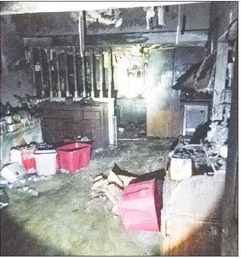Don’t let your world go up in smoke


FIRE SAFETY
by Eloy Gomez
GRF safety and emergency coordinator
Older Adults and Fires
According to the U.S. Fire Administration, older adults (individuals 65 years and older) represent one of the highest fire risk populations in the United States. As people age, they undergo physical and cognitive changes that can impair their abilities to prevent or respond to fires and situations in which fire is likely.
Some substance-induced conditions, such as those caused by alcohol consumption or the side effects of prescription medication, can result in a wide range of impairments that increase older adults’ risks of fire, fire fatality and fire injury. Often, physical and cognitive changes do not stand alone. Someone could have poor vision and hearing, and be prescribed medications that impair their abilities all at the same time.
Studies Show
• Older Americans represent a high fire risk group—13 percent of the population is 65 or older, and this percentage is expected to grow rapidly.
• 1,200 older adults die each year from fire, the sixth leading cause of death in this population group.
• Disabilities in the elderly— vision and hearing loss and mobility impairments—exacerbate the fire risk.
Home Fire Safety Tips For Older Americans Prepare:
• Have working smoke alarms in your home. Residents should have a smoke alarm in bedrooms and outside sleeping areas. Test smoke alarms to make sure the sound of the alarm is loud enough to awaken sleepers. People who are vision- or hearing-impaired or both can purchase special smoke alarms with super bright strobe lights designed to alert them any time of night or day. Some smoke alarms are even equipped with a vibration unit designed to be placed under a mattress to wake people during a fire. Plan:
• People should make a plan of escape, designed around their abilities. Those who use wheelchairs, walkers or canes should make sure they can get to them quickly. Keep glasses, hearing aids and a sturdy pair of shoes next to the bed. The plan should include at least two emergency exits. Keep these exits clear of furniture and clutter that may hinder a fast getaway.



